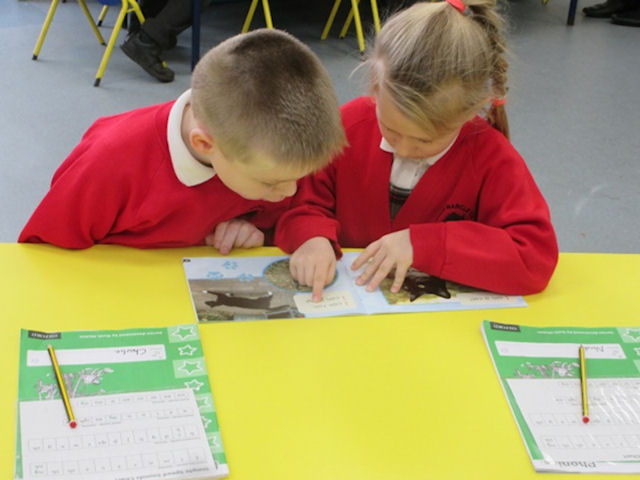English
Phonics
At Much Marcle we follow a phonics programme called Read Write Inc.
In Read Write Inc. Phonics lessons, children learn to read accurately and fluently with good comprehension. They learn to form each letter, spell correctly, and compose their ideas step-by-step.
Throughout the programme, children learn 150+ graphemes that represent 44 speech sounds. They rapidly learn sounds and the letters. High frequency words that are not phonetically decodable are taught as ‘tricky’ red words and are practised frequently.
The phonics screening check is taken individually by all children at the end of Year 1. It is designed to give teachers and parents information on how your child is progressing in phonics. There are two sections in this 40-word check and it assesses phonics skills and knowledge learned through Reception and Year 1. It will help to identify whether your child needs additional support at this stage so that they do not fall behind in this vital early reading skill.
Reading
At Much Marcle we follow the Oxford Reading Tree scheme for reading.
Children are regularly assessed in reading and are moved through the reading levels based on their reading word level, fluency and comprehension. We encourage the children to engage with text three times to build up their fluency and aid their comprehension. Parents are given comprehension question to support with reading at home.
Our main aim is to promote a love of reading through quality resources which are continually updated. We have a well-resourced library where the children can engage with books linked to their topics.
Children read a story three times. On the first read they focus on accurate word reading; the second, on developing fluency; and on the third read, comprehension.
Accuracy – children learn to:
- Read new sounds and review sounds taught so far;
- Sound out unfamiliar words;
- Understand meaning of new words;
- Read the story (first time).
Fluency – children learn to:
- Read words in the story speedily;
- Track the story;
- Read the story with increased speed (second read).
Comprehension – children learn to:
- Predict outcomes;
- Discuss and compare key events in the story;
- Read with a storyteller’s voice (expression).

Writing
The children write every day, rehearsing out loud what they want to write, until they are confident to write independently.
Transcription – children learn to:
- Develop handwriting styles;
- Spell common words with common graphemes and suffixes;
- Spell common words with unusual graphemes;
- Write a prepared sentence with correct spelling and punctuation.
Composition – children learn to:
- Build and rehearse their own sentences based on the ideas of the story;
- Apply new grammar concepts linked to the story;
- Use new vocabulary in their writing;
- Edit their writing to correct grammar and punctuation;
- Write a composition based on the storybook they have read;
- Edit their own and their partner’s writing.




